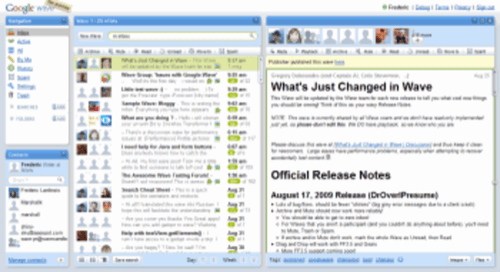Google just announced that it will open up Google Wave to a large number of Google Apps users this fall. According to the announcement, Google will first open up access for some schools and businesses and plans to bring Wave to all Google Apps users next year. Google Apps administrators can now sign up for Google Wave accounts here. Google had already announced that it would hand out about 100,000 Wave accounts on September 30th and this looks to be the first step towards this.

Opening up Wave first to businesses and schools seems like a smart way to open up Wave to a larger number of users, especially given that the application’s features are already geared towards these users. Wave is an extremely flexible communications environment and should work well for anybody who needs to collaborate on documents or just wants to keep notes and share them with colleagues or fellow classmates. If you haven’t seen Wave in action yet, have a look at this video of the first public demo of Wave.
Wave Today: Stable, Faster, Ready for the Masses
Since we got our first hands-on look at Google Wave in June, the platform has matured nicely. While some early reviews panned it as buggy and slow, today’s version of Google Wave is very stable and fast.

As Google puts it, “A wave is equal parts conversation and document, where individuals communicate and work together in a multimedia environment – the wave itself.” Users can, for example, write documents, but also insert maps, photos, web feeds, and widgets. Most of the usage we have seen so far has been more akin to a well-structured chat room, but once a more mainstream audience gets its hands on Wave, we will likely see a wider range of usage scenarios.
Google Wave has also managed to attract a large number of third-party developers by now who have programmed a wide range of new robots for Wave. These range from the weird, like a robot that translates every wave into Swedish Chef speak, to more useful features like URL shorteners and an anti-spam application.










